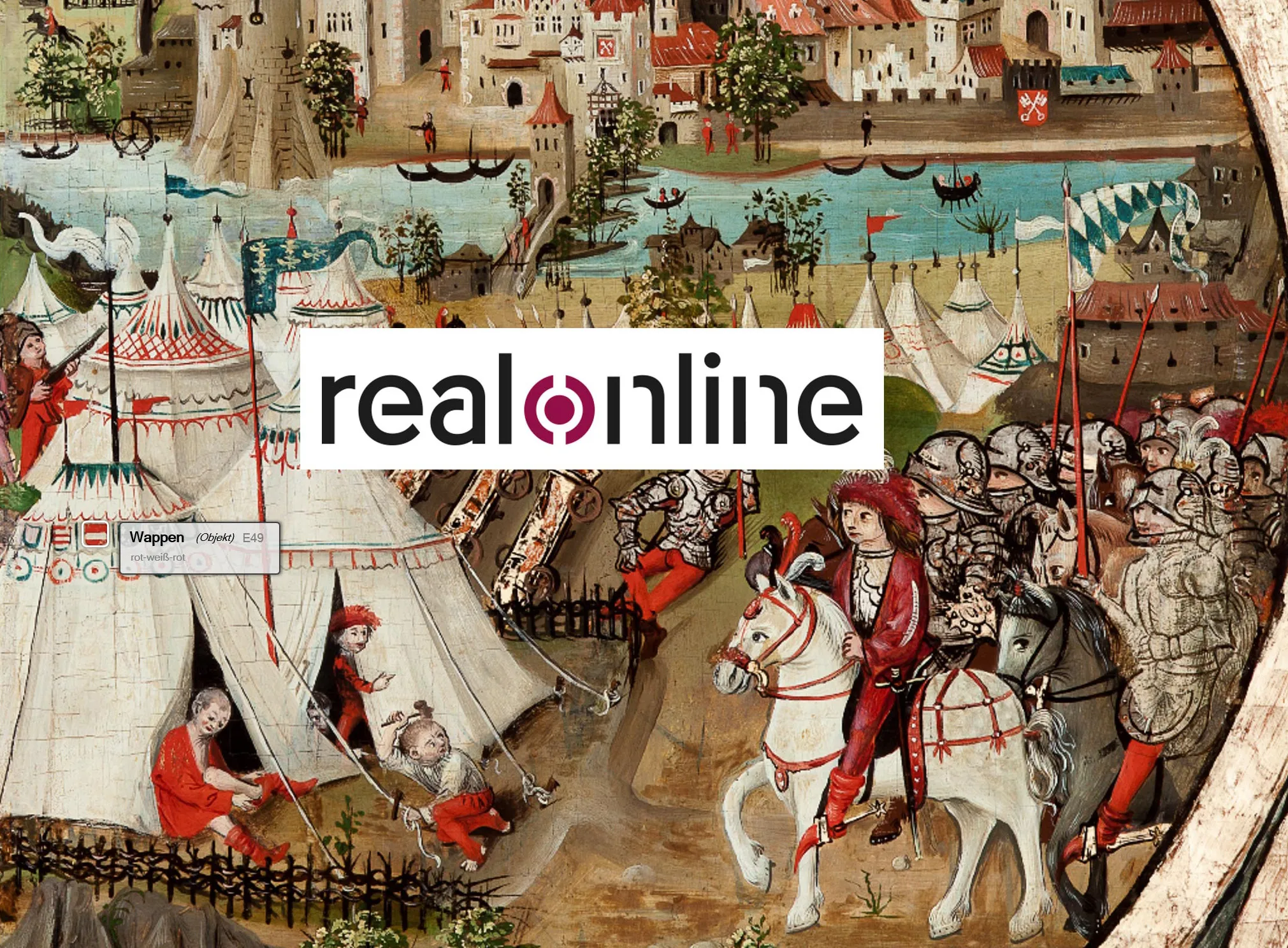
REALonline Image database
- Hosting organisations
- Universität Salzburg and Institut für Realienkunde des Mittelalters u. der frühen Neuzeit (IMAREAL)
- Responsible persons
- Isabella Nicka and Ingrid Matschinegg
- Start
- End
The outstanding feature of REALonline is the detailed indexing of the many elements of each image. All depicted persons, things, animals, plants and landscapes are recorded and enriched with further information, such as the grain of the wood, the gestures of a beggar or the shapes and colours used. This results in a versatile data pool with more than one million pieces of information about depicted elements that can be systematically filtered, searched and analyzed. In order to make even the smallest details in a picture identifiable, there is a view with tagged pictures. The image database contains more than 22,500 data records on visual media of various art techniques and genres, which were mainly created in the 12th to 16th centuries and are now kept in cultural heritage institutions in Austria and the neighbouring regions of Germany, the Czech Republic, Slovakia, Hungary, Slovenia and South Tyrol as well as in Poland and Romania.
REALonline offers a wide range of filter options. Users can enter via the full text search, but can also flexibly combine entries from well-structured search facets and thus precisely control the search process. A thesaurus search invites you to browse the image database and thus explore the world of historical images. A geobrowser helps to search for places and can also be helpful in planning your next cultural trip. At myREALonline, users can create and share their own collections. The data is also available online as a neo4j graphics database (-> Search -> Expert search), so that researchers with complex queries can analyze patterns and special features in the data material.
The data on the pictorial elements and their characteristics are recorded in a structured system in REALonline, so that the data material forms an important basis for research questions from various disciplines. Data modeling as graphs also offers the possibility of visualizing and investigating the relationships between the individual pictorial components. With REALonline, images can be analyzed as configured networks of semantic elements. The extensive thesauri used to normalize the data at input can also be used to elucidate thematic relationships in queries and visualizations of results.
